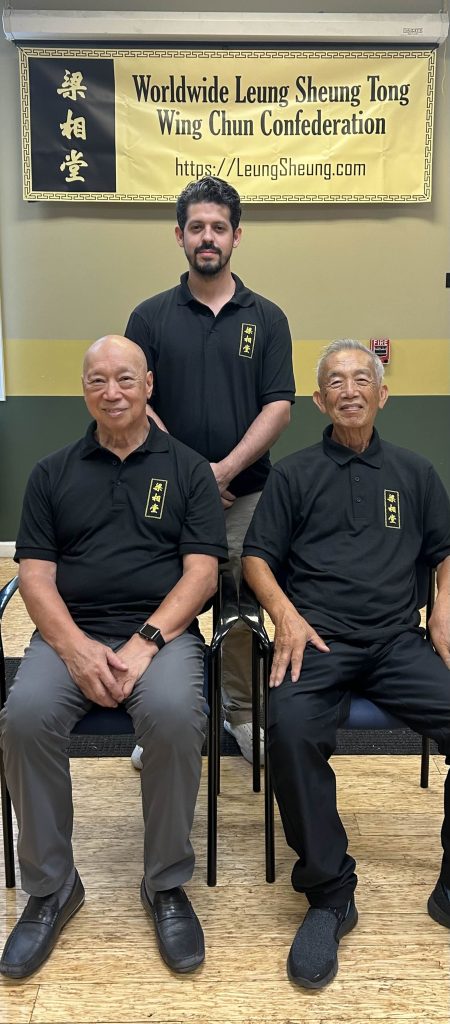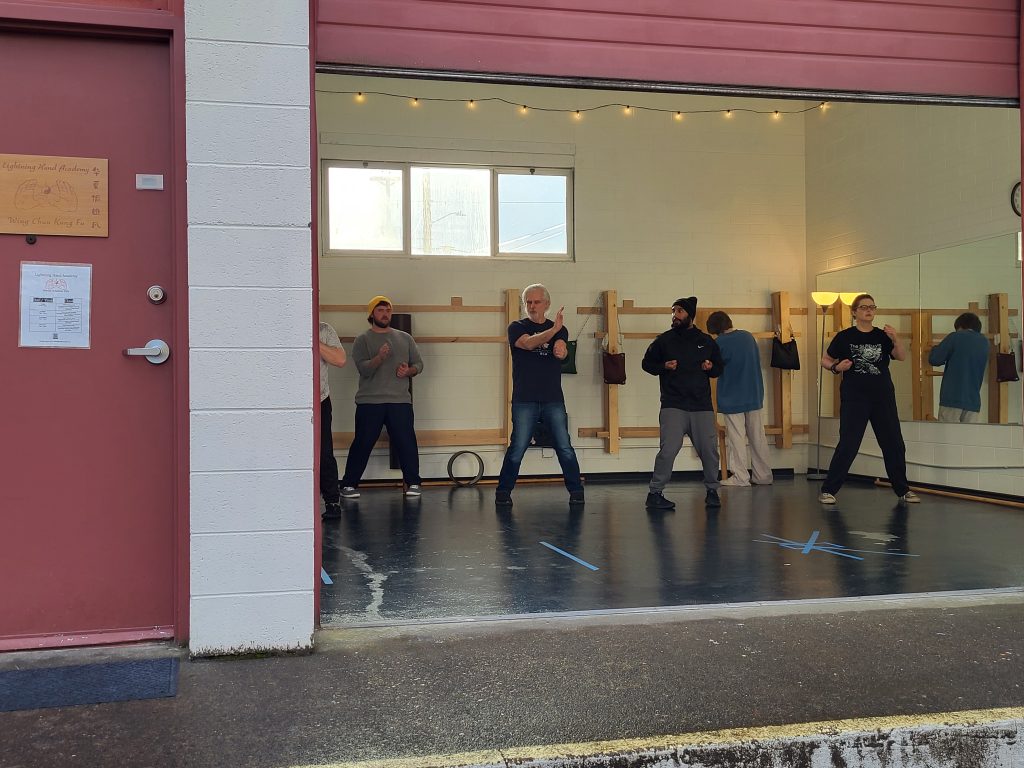Learning Wing Chun proves to be deceptively simple yet profoundly challenging to master. While achieving mastery demands years of unwavering discipline and focused practice, beginners can readily grasp its fundamental principles and promptly apply them with practical efficacy. Eschewing flashy maneuvers, Wing Chun prioritizes simplicity and effectiveness. Its essence lies in understanding its theories, scientific principles, and the ancient wisdom of internal power. Embark on the journey of Wing Chun to unravel its timeless teachings and unlock the secrets of internal strength. Wing Chun is known for:
- Efficiency
- Center-line theory
- Low kicks
- Quick & economical movements
- Tight center-line defense
- Simultaneous offensive & defensive expressions.
Benefits of Wing Chun
Community
Traditional kung fu generally teaches students to be good stewards of the community. Lightning Hand Academy is no exception to this rule as it promotes a fun, challenging, and safe environment for those eager to learn authentic Wing Chun. Please see the school’s code of conduct for more details.
Practical Self Defense
Wing Chun is well known for being a practical style of self defense. If you read the History & Lineage up above, you will learn that Wing Chun was created by a woman for a woman. This means that the art does not combat muscular force with muscular force. Instead it uses correct postural alignment together with relation, tendon & fascia strength, intention, leverage, and direct center-line theory to overcome bigger opponents.
Personal Development
There are plenty of layers of personal development that one can spend a lifetime peeling away at. Wing Chun also has many layers. In fact, many lifetime practitioners of Wing Chun have never seen a goal-post in sight. The practice of Wing Chun teaches you to be an efficient and very effective martial artist, but it also teaches you to be a better person. It fosters emotional awareness, shifting the focus from what to do to how to be.
Mental Well Being
There are many scientific studies on how mindfulness meditation, qigong, and moving meditations promote mental health and boost cognitive functioning. The forms in Lightning Hand Academy’s Wing Chun lineage are practiced slow like tai chi and are considered to be moving meditations.
Reduce Stress & Trauma
Modern-day life can be very stressful. Stress can cause us to close up and be tense, and in some cases, an autonomic nervous system dysregulation can develop. Those with PTSD may already know that there are a lot of studies linking this disorder with autonomic nervous system dysregulation, and there plenty of professionals who prescribe movement & exercise as a mode of therapy. Lightning Hand Academy teaches students to relax. “Soft power” can not be generated when practitioners are tense and stressed. Wing Chun has many energy drills designed to open up our senses. When your senses are opened you can quickly feel physical force and be able to mitigate or redirect them. As a physiological result from being open and calm, it helps reset your sympathetic nervous system (fight or flight response) back into your parasympathetic nervous system (rest and digest response). To help with relaxation, moving meditations are routinely practiced within class and are encouraged to be practiced outside of class as well. The school also practices many hip and shoulder stretches designed to open up the joints.

LHA’s Lineage
Leung Sheung was Ip Man’s first and most respected disciple. Already a kung fu master when they met in 1949 Hong Kong, he was introduced to Ip Man through a mutual acquaintance impressed by Ip’s skill. Known for saying, “You find me, you are lucky,” Leung Sheung relied solely on word of mouth, with only a modest sign in his school. Discover more about his lasting impact on Wing Chun.
Kung Fu Folklore
There are many different oral histories of how Wing Chun came to into existence. Here I share one popular version of the folklore. In the 17th century China was invaded by elements from Manchuria which formed the Qing Dynasty. The Southern Shaolin temple was located in Fujian and was well known for its military prowess against pirates. The Buddhist temple was also known to be a refuge for rebels, so the Qing Dynasty burned it down. Legend says, that the Five Elders of Shaolin survived and went into hiding.
The Five Elders of Shaolin:
- The abbot Jee Sin Sim See (Chi Sin)
- The abbess Ng Mui (Wu Mei), founder of Wing Chun
- Bak Mei, founder of White Eyebrow
- Fung Do-Duk
- Miu Hin
Ng Mui or Wu Mei is known for being a master and influencer of many styles:
- Wu Mei Pai
- Wing Chun
- Dragon style
- White Crane
- Five Pattern Hung Kuen
- Five Ancestors Fist
Legend says she was the daughter of a Ming general and started kung fu training at a very early age. She is known to have spent time in the Wudang Mountains, which if she did could have been influenced by Taoist kung fu. She eventually moved to the Southern Shaolin temple and rose to the status of abbess before it was burned down. According to Ip Man (Yip Man), the abbess fled to a village where she took on a student named Yim Wing Chun who was being forced into marriage by a local warlord. Wing Chun easily defeated him and later married Leung Bok-Chao who she taught him what she learned from the abbess. Leung Bok-Chao taught Leung Lan-kwai and named the art after his wife. In the 1850s Leung Lan-kwai spread the art to the Red Boat Opera Group to six men: Leung Yee Tai, Wong Wah-bo, Yik Kam, Hung Gan Biu, Dai Fa Min Kam, and Law Man Kung.
The Red Boat produced the student Chan Wah-shun (the “Moneychanger Wah”). Ip Man was the 16th and last student of Moneychanger Wah, and taught him for three years until he had a stroke. Chan Wah-shun’s second student Ng Chung-sok took Ip Man as his student. In 1909 Leung Bik (Leung Jan’s son) challenged young Ip Man to a friendly sparring match, which Leung Bik won. Later Ip Man became Leung Bik’s student for a couple years until he passed away.
References: History of Wing Chun, Southern Shaolin Monastery, Five Elders, Chan Wah-shun, Leung Bik, Ip Man, Leung Sheung, Wong Shun Leung
